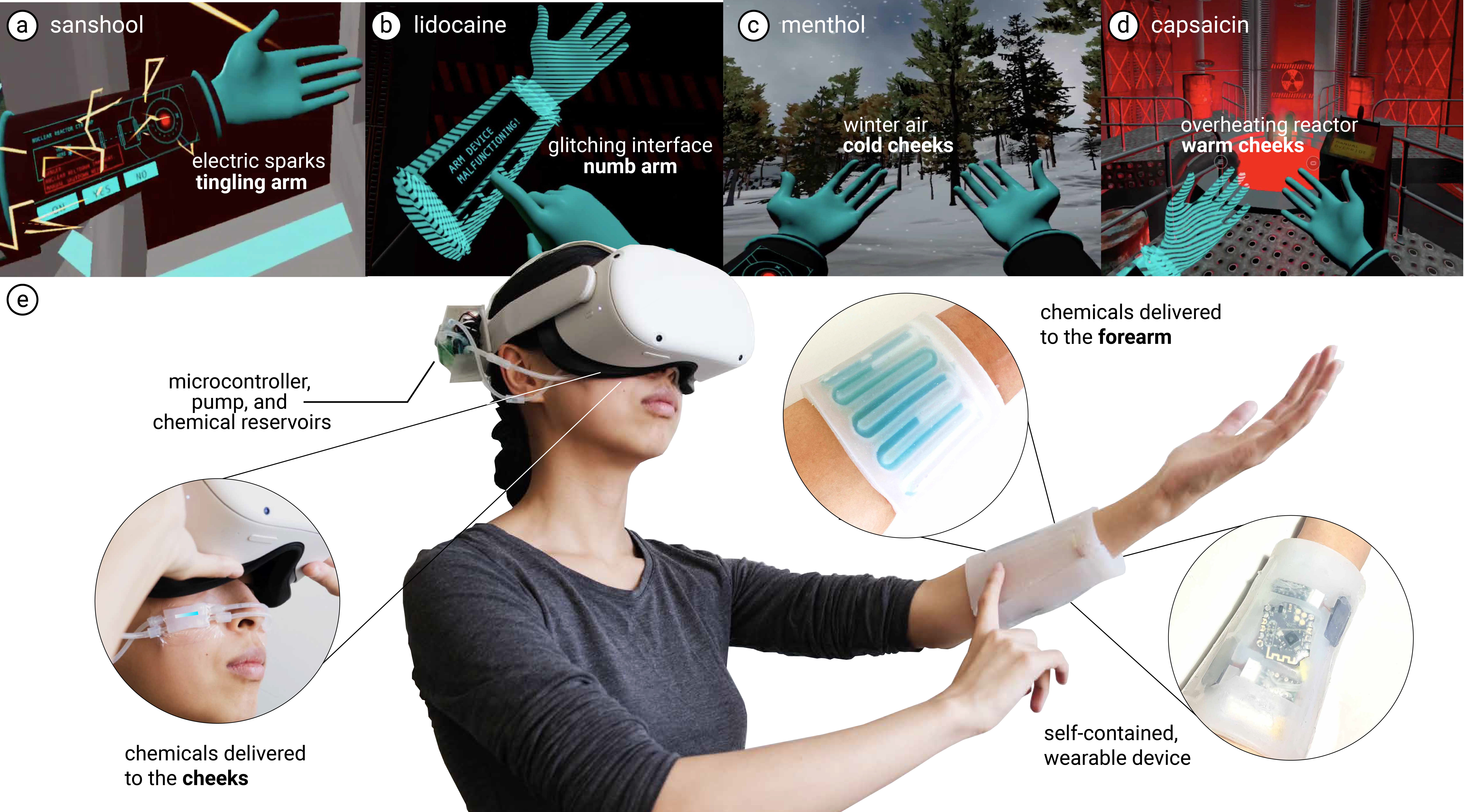Chemical Haptics:
Rendering Haptic Sensations via Topical Stimulants
Team: Jasmine Lu, Ziwei Liu, Jas Brooks, Pedro Lopes
In this paper, I explored how chemical ingredients could be applied to the skin and stimulate haptic sensations such as tingling, numbing, cooling, warming, and stinging. We explored how this could be used for interactive contexts like VR and built two devices for this use-case (one for the cheeks, one for the forearm). This paper was accepted to UIST2021 and can be read here.

Paper Abstract. We propose a new class of haptic devices that provide haptic sensations by delivering liquid-stimulants to the user’s skin; we call this chemical haptics. Upon absorbing these stimulants, which contain safe and small doses of key active ingredients, receptors in the user’s skin are chemically triggered, rendering distinct haptic sensations. We identified five chemicals that can render lasting haptic sensations: tingling (sanshool), numbing (lidocaine), stinging (cinnamaldehyde), warming (capsaicin), and cooling (menthol). To enable the application of our novel approach in a variety of settings (such as VR), we engineered a self-contained wearable that can be worn anywhere on the user’s skin (e.g., face, arms, legs). Implemented as a soft silicone patch, our device uses micropumps to push the liquid stimulants through channels that are open to the user’s skin, enabling topical stimulants to be absorbed by the skin as they pass through. Our approach presents two unique benefits. First, it enables sensations, such as numbing, not possible with existing haptic devices. Second, our approach offers a new pathway, via the skin’s chemical receptors, for achieving multiple haptic sensations using a single actuator, which would otherwise require combining multiple actuators (e.g., Peltier, vibration motors, electro-tactile stimulation). We evaluated our approach by means of two studies. In our first study, we characterized the temporal profiles of sensations elicited by each chemical. Using these insights, we designed five interactive VR experiences utilizing chemical haptics, and in our second user study, participants rated these VR experiences with chemical haptics as more immersive than without. Finally, as the first work exploring the use of chemical haptics on the skin, we offer recommendations to designers for how they may employ our approach for their interactive experiences.
